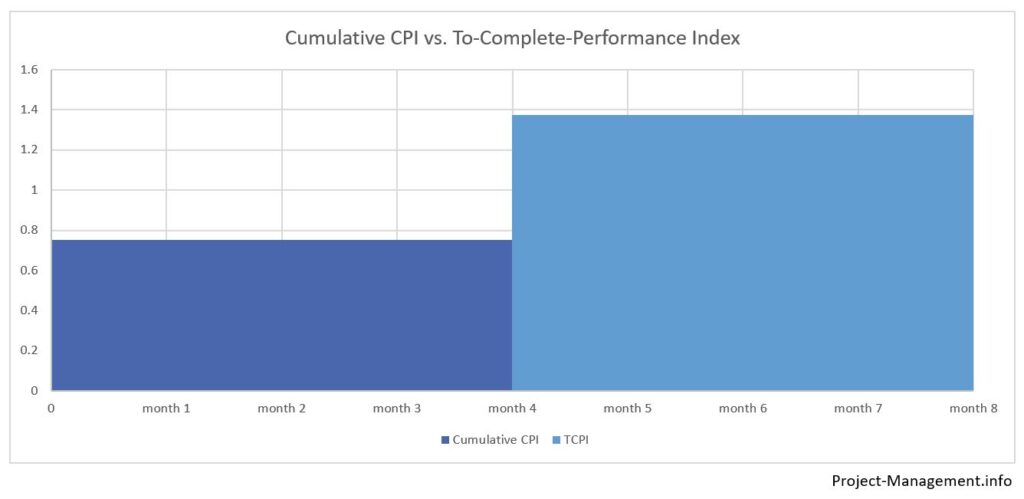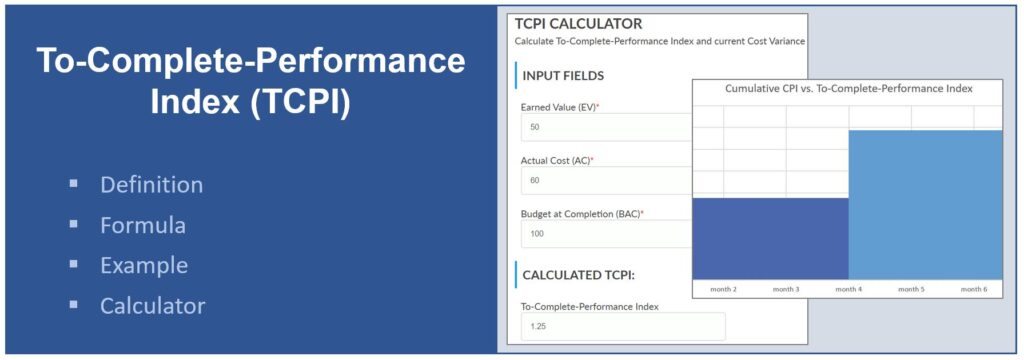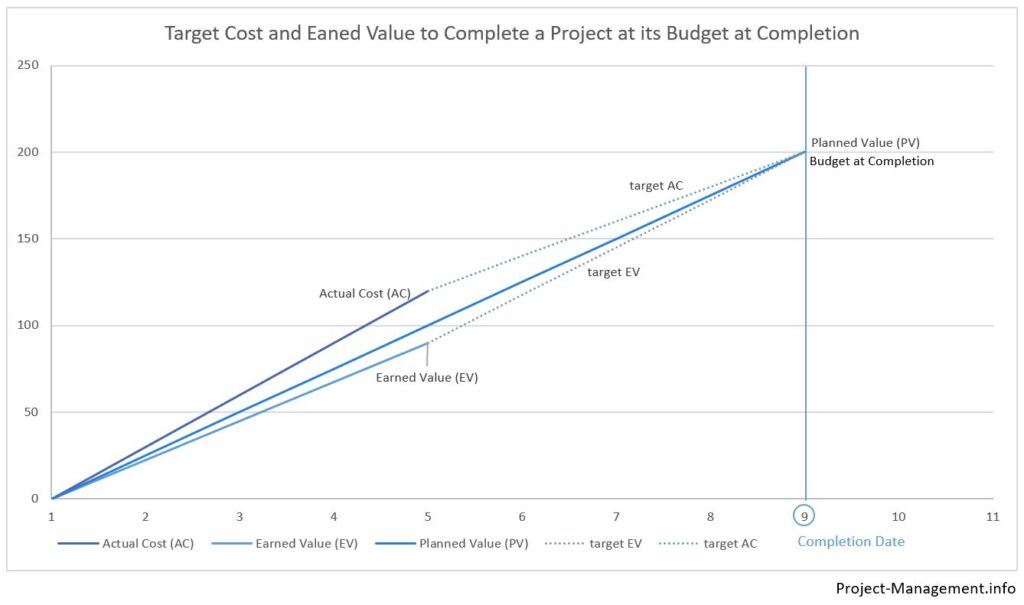When you are in the process of project cost controlling – either in a real-life situation or during your PMP exam preparation – you will probably wonder what exactly the to-complete-performance index is and how you can use this indicator. In this article, we will introduce the TCPI, its definition and formula. You can also use our TCPI tool below which will help you calculate the to-complete-performance index value for a given set of input parameters.
What Is the To-Complete-Performance-Index? The Definition.
According to the Project Management Body of Knowledge (source: PMBOK®, 6th edition, ch. 7.4.2.3, p. 266), the TCPI indicates the target cost performance index (CPI) that is needed to complete the project at the target budget. In simple words: the to-complete-performance index is the result of dividing the remaining budget according to the plan by the actually available budget (considering existing cost variances). The TCPI value is in one of the following three value ranges, each of which has a different meaning:
- TCPI = 1: the project can continue with the current budget consumption rate
- TCPI < 1: based on the current cost variance, the project will be completed at total cost lower than the budget
- TCPI > 1: if the project continues working with the present cost variance, it will complete at a budget overrun. Going forward, the actual cost-performance index of the project should meet the TCPI value to allow the project to be completed within the approved budget.
In practice, the TCPI is mostly used in situations where the actual cost exceeds the earned value (i.e. the third case). The to-complete-performance index then indicates at which factor the future cost performance needs to be changed in order to complete the project at the planned budget.
How Is the To-Complete-Performance-Index (TCPI) Calculated?
Before discussing the formula, we are defining the input parameters of the TCPI calculation:
Input Parameters
The TCPI formula requires 3 input parameters.
Budget at Completion (BAC): the cost planned an approved for the project to complete its work (before management reserves).
Earned Value (EV): the amount of work performed by the time of calculating the TCPI.
Actual cost (AC): the cost incurred by the time of the TCPI computation.
If the initial BAC has already been replaced by an Estimate at Completion (EAC), you will want to use the EAC to achieve a meaningful result. Learn more about the Estimate at Completion in our dedicated article or use our EAC calculator to determine the Estimate at Completion of your project.
The to-complete-performance index (TCPI) Formula
The formula to calculate the TCPI is:
TCPI = (BAC – EV) / (BAC – AC)
with the previously defined parameters.
In other words: TCPI is the amount of the remaining work (BAC – EV) divided by the remaining budget (BAC – AC).
If an EAC has replaced the BAC in the project baseline, the EAC is used instead of the BAC.
Example of a TCPI Calculation
At the end of month 4, the records of a project that is to be completed by the end of month 8, are as follows:
| Example | month 1 | month 2 | month 3 | month 4 | month 5 | month 6 | month 7 | month 8 |
| Actual Cost (AC) | 30 | 60 | 90 | 120 | ||||
| Earned Value (EV) | 22.5 | 45 | 67.5 | 90 | ||||
| Planned Value (PV) | 25 | 50 | 75 | 100 | 125 | 150 | 175 | 200 |
| Budget at Completion (BAC) | 200 |
Obviously, there is a negative cost variance (-30) as the actual cost are significantly higher than the earned value. The Cost Performance Index has a value of 0.75 (CPI = EV / AC).
The project manager is conscious of the need to reduce future incurred cost and increase the value to be earned going forward. The following diagram shows the changes to the curve of the cost and value indicators that are required to achieve the budget at completion.
The to-complete-performance index quantifies the target cost performance index that is therefore needed. The calculation is:
TCPI = (200 – 90) / (200 – 120) = 1.375
In order to meet the budget at completion, the project needs to perform at a cost performance index (CPI) of 1.375 as of month 5, rather than continuing to perform at the current CPI of 0.75.

In practice, a turnaround at this point halfway through a project with such a significant cumulative cost overrun may require massive action. If no impactful options are left, the project manager might consider calculating a new estimate at completion in order to adjust the plan to the new reality.
The To-Complete-Performance-Index Calculator
Fill in the input parameters and find out the TCPI of your current project situation.
Conclusion
The TCPI is a useful indicator to identify whether your project cost and performance deviate from the planned progress. It will tell you to which extent the cost variance needs to be adjusted which implies either a reduction of the cost incurred over the course of the project or an increase of earned value. While the calculation of the TCPI is comparatively simple, the implementation of subsequent measures in the project cost management can be challenging. For further details on the use of the TCPI in earned value management, you can refer to this conference paper (see Scott, W. J. (2012). TCPI: the tower of power. Paper presented at PMI® Global Congress 2012—North America, Vancouver, British Columbia, Canada. Newtown Square, PA: Project Management Institute. Available in the PMI Learning Library) and read our article on earned value management.


